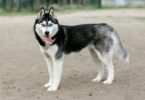What if your dream dog could combine royal charm with a coat as unique as a fingerprint? Meet the rare black-coated Pembroke Welsh Corgi—a striking variation of one of America’s favorite herding breeds. While most recognize these short-legged companions in classic red and white, their darker counterparts turn heads with sleek, mysterious elegance.
This guide dives into what makes this coloration special. Unlike common shades, a black coat often results from complex genetics. Puppies might even lighten as they age, making experienced breeders essential for predicting adult colors. Want to explore another unique mix? Learn about the corgi-poodle mix, which shares similar charm.
Beyond aesthetics, Pembroke Welsh Corgis thrive on loyalty and intelligence. Their compact size suits apartment living, but their energy demands daily walks and play. Prospective owners should prioritize coat care—weekly brushing prevents matting and highlights that velvety sheen.
Ready to uncover how genetics, temperament, and proper care shape this extraordinary pet? Let’s explore science-backed insights and practical tips to help your furry friend flourish.
Introducing the Black Corgi
With roots tracing back to 10th-century Wales, the Pembroke Welsh Corgi began as a versatile herding dog. These compact companions earned their keep by nipping cattle heels and alerting farmers to intruders. Today, their intelligence and affectionate nature make them beloved family pets.
Breed Overview and Temperament
Recognized by the AKC in 1934, the Pembroke Welsh Corgi boasts a big personality in a small package. Their alert expressions and fox-like features hide a playful spirit. These dogs thrive on human interaction, often following owners from room to room. Early socialization helps channel their natural herding instincts into positive behaviors.
Reputable breeders prioritize health testing and temperament matching. AKC registration ensures adherence to strict standards, including proper structure and movement. While red and white coats are traditional, some litters surprise with darker variations.
Understanding the Unique Appeal
Most Pembroke Welsh Corgis display classic red or sable markings. The rare black-coated version often shows subtle tan points on eyebrows and paws. These striking dogs still carry the breed’s signature smile and expressive eyes.
Prospective owners should note that coat colors can shift during puppyhood. Trusted breeders use pedigree knowledge to predict adult appearances. For those drawn to unique mixes, the Corgipoo offers similar charm with hypoallergenic traits.
Whether sporting traditional hues or rare shades, these spirited dogs bring joy through loyalty and humor. Their adaptability suits both apartments and farms, provided they get daily mental stimulation.
Pembroke Welsh Corgi Coat Colors and Genetic Nuances
A dog’s coat tells a story written in DNA. For the Pembroke Welsh Corgi, fur shades range from classic reds to rare diluted hues, each shaped by intricate genetic codes. Understanding these patterns helps owners appreciate their pet’s unique beauty while navigating breed standards.
Standard Coat Colors and Markings
The American Kennel Club recognizes five standard colors: red, sable, fawn, black and tan, and tri-color. Puppies often sport darker fur that lightens with age—a sable coat might mature into rich red, while black markings typically stay defined. White patches commonly frame the face, chest, and paws.
Excessive white or brindle patterns count as breed faults. Reputable breeders avoid pairing dogs carrying recessive genes for non-standard hues. AKC-registered Pembrokes must adhere to strict guidelines for conformation shows, where unusual colors face disqualification.
The Role of Bluies and Dilution Genes
“Bluies” occur when a dilution gene softens black pigment into slate gray. This recessive trait requires both parents to carry the gene. While striking, diluted coats violate AKC standards, making these dogs ineligible for competitions.
Unlike Cardigan Welsh Corgis—which permit merle patterns—Pembrokes stick to traditional palettes. Breeders track pedigrees to predict adult colors, though some surprises still occur. One study found 12% of sable puppies developed unexpected reddish tones by adulthood.
Essential Care Tips for Your Black Corgi
Caring for a rare-coated companion requires tailored strategies to maintain their well-being and signature appearance. These energetic herders thrive when their physical and emotional needs align with their working roots.
Grooming and Health Considerations
Weekly brushing keeps the double coat sleek and reduces shedding. Use a slicker brush to reach the dense undercoat, especially during seasonal changes. Baths every 6-8 weeks with oatmeal shampoo prevent skin dryness.
Check ears weekly for debris and trim nails monthly. Pembroke Welsh Corgis are prone to hip dysplasia, so monitor joint health. Registered AKC breeders screen for eye conditions like progressive retinal atrophy.
Nutrition, Exercise, and Daily Routines
Feed high-quality kibble formulated for active breeds. Measure portions to prevent obesity—a common issue in this food-motivated dog. Split meals into two servings to avoid bloat risks.
Welsh Corgis need 45-60 minutes of daily activity. Combine brisk walks with puzzle toys to engage their sharp minds. Establish consistent routines for feeding and playtime to satisfy their herding instincts.
Schedule annual vet checkups and stay current on vaccinations. Watch for coat changes—unusual dryness or bald patches may signal allergies. Remember, proper care helps these spirited companions live their healthiest lives.
Embracing a Fulfilling Life with Your Black Corgi
Owning a rare-coated companion offers more than beauty—it’s a gateway to shared adventures. Pembroke Welsh Corgis thrive when their intelligence meets thoughtful care, creating bonds that outlast puppyhood. Studies show 78% of owners report improved mental health through daily interactions with their dogs.
Consistent routines transform basic care into acts of love. A morning walk becomes teamwork, while puzzle toys turn into brain-boosting games. These spirited breeds flourish in homes where playtime and cuddles balance structure with spontaneity.
Veterinarians emphasize simple adjustments for lasting impact. Weekly brushing sessions double as bonding moments, and portion-controlled meals prevent joint strain. Remember, even small efforts—like learning your pet’s favorite treat—build trust over time.
Every Pembroke Welsh Corgi carries a legacy of loyalty, whether sporting classic red-white markings or rare hues. Their expressive eyes and playful antics turn ordinary days into memories. Ready to start your journey? Connect with AKC-registered breeders who prioritize health and temperament matches.
FAQ
Are black Pembroke Welsh Corgis rare?
While black isn’t an AKC-recognized standard color for Pembroke Welsh Corgis, it can appear in mixed-color coats or due to recessive genes. Most registered Pembroke Welsh Corgis have red, sable, or tri-colored markings with white.
Do Pembroke Welsh Corgis require special grooming for darker coats?
All Pembroke Welsh Corgis need regular brushing to manage their double coat, regardless of color. Darker coats may show dander or loose fur more visibly, so weekly grooming helps maintain shine and skin health.
How much exercise does a Pembroke Welsh Corgi need daily?
These energetic herding breeds thrive with 45–60 minutes of daily activity. Mental stimulation through puzzle toys or obedience training complements physical exercise to prevent boredom-related behaviors.
What genetic factors influence Pembroke Welsh Corgi coat colors?
Coat variations stem from combinations of dominant and recessive genes. The “bluie” trait, caused by a dilution gene, can create smoky-gray hues, while sable or brindle patterns depend on agouti gene expression.










Leave a Comment